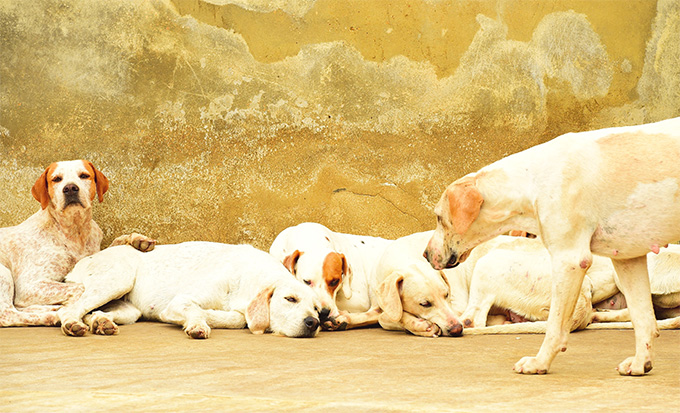The English Foxhound was originally a hunting dog breed, designed to pursue foxes in the English countryside. Today they also enjoy life as a family companion and compete in the conformation ring. Many English Foxhounds also compete in Foxhound Performance Trials, which grade the dogs on their pack hunting skills.
Even though these are purebred dogs, some may still end up in the care of shelters or rescues. Consider adoption if this is the breed for you.
As hunting dogs, English Foxhounds have high energy and need plenty of exercise during the day. Apartment dwellers beware, as this pup needs room to run and may “speak up” quite a bit, which may not foster the best relationships with nearby neighbors. Meet the breed’s exercise needs, and you’ll have a playful and affectionate member of the family.
DogTime recommends this dog bed to give a good night’s sleep to your medium-sized English Foxhound. You should also pick up this dog water bottle for any outdoor adventures you have with your pup!
See below for complete English Foxhound dog breed facts and characteristics!
English Foxhound Dog Breed Pictures
Adaptability
-
Adapts Well To Apartment Living
Looking for the best dog for your apartment? Contrary to popular belief, the suitability of dogs who adapt well to apartment living goes beyond its size. Apartment dwellers have a myriad of dog breeds to choose from as potential companions, with various factors to consider. Some large breeds can adapt well to apartment living and have lower activity levels. Others may require more space and possess higher energy levels. On the other hand, certain small dog breeds with abundant energy can still find contentment with indoor playtime or brisk walks.
However, when selecting a dog that adapts well apartments, it is essential to prioritize your neighbors. Opting for a pet that doesn’t excessively bark and behaves politely when encountering others in shared spaces like is crucial for maintaining a harmonious apartment environment.
In high-rise settings, it’s worth noting that numerous small dogs may exhibit a propensity for high energy and frequent barking. This makes them less suitable for apartment living. Therefore, desirable qualities in an apartment dog encompass being quiet, low-energy, and displaying polite behavior towards other residents.
Factors To Consider When Choosing A Dog For An Apartment
When considering dogs that adapt well to apartments, size alone should not be the sole determinant. Apartment dwellers have a wealth of dog breeds to choose from as potential furry companions. It’s important to remember that the size of your living space is just one factor to consider. While some larger breeds can adapt well to apartment living, with lower, others may require more space and have higher energy levels, making them less suitable for smaller apartments. Conversely, certain small dog breeds with higher energy levels can still thrive in apartments, finding contentment through indoor playtime or brisk walks. However, it is crucial to consider your neighbors’ comfort when selecting a dog. Opt for a pet that doesn’t bark excessively and behaves politely when interacting with others in shared spaces.
Therefore, it’s important to prioritize qualities such as being quiet, low-energy, calm indoors, and exhibiting good manners when living in close proximity to other residents. By considering these factors, you can find a dog that will adapt well to apartment living and create a harmonious living environment for everyone involved.
-
Good For Novice Owners
Some dogs are simply easier than others; they take to training better and are fairly easygoing. They’re also resilient enough to bounce back from your mistakes or inconsistencies.
Dogs who are highly sensitive, independent thinking, or assertive may be harder for a first-time dog parent to manage. You’ll get your best match if you take your dog-owning experience into account as you choose your new pooch.
If you’re new to dog parenting, take a look at 101 Dog Tricks and read up on how to train your dog!
-
Sensitivity Level
Some dogs will let a stern reprimand roll off their backs, while others take even a dirty look to heart. Low-sensitivity dogs, also called “easygoing,” “tolerant,” “resilient,” and even “thick-skinned,” can better handle a noisy, chaotic household, a louder or more assertive owner, and an inconsistent or variable routine. Do you have young kids, throw lots of dinner parties, play in a garage band, or lead a hectic life? Go with a low-sensitivity dog.
-
Tolerates Being Alone
Some breeds bond very closely with their family and are more prone to worry or even panic when left alone by their owner. An anxious dog can be very destructive–barking, whining, chewing, and otherwise causing mayhem. These breeds do best when a family member is home during the day or if you can take the dog to work.
-
Tolerates Cold Weather
Breeds with very short coats and little or no undercoat or body fat, such as Greyhounds, are vulnerable to the cold. Dogs with a low cold tolerance need to live inside in cool climates and should have a jacket or sweater for chilly walks. You can find a great jacket for your dog here!
-
Tolerates Hot Weather
Dogs with thick, double coats are more vulnerable to overheating. So are breeds with short noses, like Bulldogs or Pugs, since they can’t pant as well to cool themselves off. If you want a heat-sensitive breed, your dog will need to stay indoors with you on warm or humid days, and you’ll need to be extra cautious about exercising your dog in the heat.
All-around friendliness
-
Affectionate With Family
When it comes to unconditional love and unwavering loyalty, few animals can rival the affectionate nature of dogs. These remarkable creatures have earned their reputation as man’s best friend, and many breeds are particularly renowned for their love and devotion to their families. With their warm hearts and wagging tails, affectionate family dogs enrich the lives of their owners in countless ways.
One such breed known for its affectionate demeanor is the Golden Retriever. With their gentle temperament and friendly disposition, Golden Retrievers form deep bonds with their families. They eagerly participate in family activities, whether it’s a game of fetch in the yard or cuddling on the couch during a movie night. Their expressive eyes and ever-wagging tails are a testament to the joy they feel in the presence of their loved ones.
Another family-favorite breed is the Labrador Retriever. Renowned for their playful and patient nature, Labradors are excellent companions for children and adults alike. They readily engage in playtime with the kids, showcasing their boundless energy and enthusiasm. But when the day winds down, they seamlessly transition into loving and gentle cuddle buddies, comforting their family members with their warm presence.
Beyond specific breeds, mixed-breed dogs also have a special place in the hearts of families seeking affectionate companions. The shelter dogs, in particular, form deep connections with their adoptive families. They seem to understand the second chance they’ve been given and repay it with endless love and gratitude.
How To Know If A Dog Is Good With Families
The affectionate nature of family dogs extends beyond play and cuddles. Dogs have a remarkable ability to sense their owner’s emotions, offering comfort and support during difficult times. Whether it’s a wagging tail after a long day at work or a sympathetic nuzzle during moments of sadness, they prove time and again that they are attuned to their family’s needs.
It is important to note that not all dogs of the same breed will be equally affectionate. Some dogs may be more independent or aloof, while others may be more clingy or demanding of attention. The best way to find out how affectionate a dog is is to meet them in person and interact with them.
-
Kid-Friendly
Being gentle with children, sturdy enough to handle the heavy-handed pets and hugs they can dish out, and having a blasé attitude toward running, screaming children are all traits that make a kid-friendly dog. You may be surprised by who’s on that list: Fierce-looking Boxers are considered good with children, as are American Staffordshire Terriers (which are considered Pit Bulls). Small, delicate, and potentially snappy dogs such as Chihuahuas aren’t always so family-friendly.
**All dogs are individuals. Our ratings are generalizations, and they’re not a guarantee of how any breed or individual dog will behave. Dogs from any breed can be good with children based on their past experiences, training on how to get along with kids, and personality. No matter what the breed or breed type, all dogs have strong jaws, sharp pointy teeth, and may bite in stressful circumstances. Young children and dogs of any breed should always be supervised by an adult and never left alone together, period.
-
Dog Friendly
Friendliness toward dogs and friendliness toward humans are two completely different things. Some dogs may attack or try to dominate other dogs, even if they’re love-bugs with people; others would rather play than fight; and some will turn tail and run. Breed isn’t the only factor. Dogs who lived with their littermates and mother until at least six to eight weeks of age and who spent lots of time playing with other dogs during puppyhood, are more likely to have good canine social skills.
-
Friendly Toward Strangers
Stranger-friendly dogs will greet guests with wagging tails and nuzzles; others are shy, indifferent, or even aggressive. However, no matter what the breed, a dog who was socialized and exposed to lots of different types, ages, sizes, and shapes of people as a puppy will respond better to strangers as an adult. Remember that even friendly dogs should stay on a good, strong leash like this one in public!
Health And Grooming Needs
-
Amount Of Shedding
If you’re going to share your home with a dog, you’ll need to deal with some level of dog hair on your clothes and in your house. However, shedding does vary greatly among the breeds. Some dogs shed year-round, some “blow” seasonally, some do both, and some shed hardly at all. If you’re a neatnik, you’ll need to either pick a low-shedding breed or relax your standards. To help keep your home a little cleaner, you can find a great de-shedding tool here!
-
Drooling Potential
Drool-prone dogs may drape ropes of slobber on your arm and leave big, wet spots on your clothes when they come over to say hello. If you’ve got a laid-back attitude toward slobber, fine; but if you’re a neatnik, you may want to choose a dog who rates low in the drool department.
-
Easy To Groom
Some breeds are brush-and-go dogs; others require regular bathing, clipping, and other grooming just to stay clean and healthy. Consider whether you have the time and patience for a dog who needs a lot of grooming, or the money to pay someone else to do it.
-
General Health
Due to poor breeding practices, some breeds are prone to certain genetic health problems, such as hip dysplasia. This doesn’t mean that every dog of that breed will develop those diseases; it just means that they’re at an increased risk.
If you’re adopting a puppy, it’s a good idea to find out which genetic illnesses are common to the breed you’re interested in. You may also want to ask if your shelter or rescue has information about the physical health of your potential pup’s parents and other relatives.
-
Potential For Weight Gain
Some breeds have hearty appetites and tend to put on weight easily. As in humans, being overweight can cause health problems in dogs. If you pick a breed that’s prone to packing on pounds, you’ll need to limit treats, make sure they get enough exercise, and measure out their daily food servings into regular meals rather than leaving food out all the time.
Ask your vet about your dog’s diet and what they recommend for feeding your pooch to keep them at a healthy weight. Weight gain can lead to other health issues or worsen problems like arthritis.
-
Size
Get ready to meet the giants of the doggy world! Large dog breeds aren’t just big balls of fluff, they’re like loving, oversized teddy bears on a mission to steal your heart. Need some convincing? Let’s dive into the awesome benefits of owning one!
First things first, these pooches are a living security system! With their impressive size and thunderous barks, they’ll have any would-be intruder running for the hills. Talk about peace of mind! Plus, who needs an alarm when you’ve got a furry giant protecting your castle?
But that’s not all. Large dog breeds are all about loyalty and devotion. They’ll stick by your side through thick and thin, becoming your most dedicated bestie. Their love knows no bounds! When you have a giant fluffball showing you unconditional love, you’ll feel like the luckiest human on the planet.
Now, let’s talk about their talents. These big fellas are the ultimate working partners. With brains and brawn, they’re up for any challenge. From search and rescue missions to lending a helping paw to those in need, these dogs are superheroes in fur coats. They’ll make you proud every step of the way!
Don’t let their size fool you—these gentle giants have hearts as big as their paws. They’re incredible with kids and other pets, spreading their love like confetti. Their patience and kindness make them perfect family pets, ensuring harmony in your household.
Oh, and get ready to break a sweat! These dogs are fitness enthusiasts, and they’ll keep you on your toes. Daily walks, jogs, and play sessions will not only keep them happy and healthy but will also give you a reason to ditch the couch and join in on the fun. It’s a win-win situation!
So, if you’re ready for a dose of big love, go ahead and consider a large dog breed. They’re the best wing-dog you could ever ask for, ready to make your life a thousand times more exciting, loving, and downright awesome! Get ready for the big adventure of a lifetime!
Trainability
-
Easy To Train
Easy-to-train dogs are more adept at forming an association between a prompt (such as the word “sit”), an action (sitting), and a consequence (getting a treat) very quickly. Other dogs need more time, patience, and repetition during training.
Many breeds are intelligent but approach training with a “What’s in it for me?” attitude, in which case you’ll need to use rewards and games to teach them to want to comply with your requests.
Related:
10 Fun, Impressive Tricks You Can Teach Any Dog
-
Intelligence
Dogs who were bred for jobs that require decision making, intelligence, and concentration, such as herding livestock, need to exercise their brains, just as dogs who were bred to run all day need to exercise their bodies. If they don’t get the mental stimulation they need, they’ll make their own work–usually with projects you won’t like, such as digging and chewing. Obedience training and interactive dog toys are good ways to give a dog a brain workout, as are dog sports and careers, such as agility and search and rescue.
-
Potential For Mouthiness
Common in most breeds during puppyhood and in Retriever breeds at all ages, mouthiness means a tendency to nip, chew, and play-bite (a soft, fairly painless bite that doesn’t puncture the skin). Mouthy dogs are more likely to use their mouths to hold or “herd” their human family members, and they need training to learn that it’s fine to gnaw on chew toys, but not on people. Mouthy breeds tend to really enjoy a game of fetch, as well as a good chew on a toy that’s been stuffed with kibble and treats.
-
Prey Drive
Dogs with a high prey drive have an instinctive desire to stalk, capture, and prey upon potential food sources. Dogs who were bred to hunt, such as Terriers, have an inborn desire to chase — and sometimes kill — other animals. Anything whizzing by — such as cats, squirrels, and perhaps even cars — can trigger that instinct.
How to address a high prey drive
Off-leash adventures are too great a temptation for pups who will wander and hunt. Dogs who like to chase need to be leashed. And, even on a leash, you may experience your dog pulling on the leash to reach rodents or birds in their sight. Otherwise, these pups should be kept in a fenced area when outdoors. If your pup has a high prey drive, you’ll need a high, secure fence in your yard.
These breeds generally aren’t a good fit for homes with smaller pets that can look like prey, such as cats, hamsters, or small dogs. Breeds that were originally used for bird hunting, on the other hand, generally won’t chase, but you’ll probably have a hard time getting their attention when there are birds flying by.
Other behavioral concerns
Observing your dog’s prey drive, which is instinctual and biologically-rooted, is not the same as observing aggression. Much aggression is born of fear and anxiety, especially in the case of dog aggression toward humans.
The tendency to wander, even into oncoming traffic, can produce diasterious results for pups with predatory instincts. It can also lead to pups being bitten by snakes or attacked by other wild animals they may pursue while on the hunt.
-
Tendency To Bark Or Howl
Some breeds sound off more often than others. When choosing a breed, think about how often the dog vocalizes. Learn more about breeds with a tendency to bark or howl.
If you’re considering a hound, would you find their trademark howls musical or maddening? If you’re considering a watchdog, will a city full of suspicious “strangers” put your pup on permanent alert? Will the local wildlife literally drive your dog wild? Do you live in housing with noise restrictions? Do you have neighbors nearby? Then you may wish to choose a quieter dog.
-
Wanderlust Potential
Some breeds are more free-spirited than others. Nordic dogs such as Siberian Huskies were bred to range long distances, and given the chance, they’ll take off after anything that catches their interest. And many hounds simply must follow their noses–or that bunny that just ran across the path–even if it means leaving you behind.
Exercise needs
-
Energy Level
High-energy dogs are always ready and waiting for action. Originally bred to perform a canine job of some sort, such as retrieving game for hunters or herding livestock, they have the stamina to put in a full workday. They need a significant amount of exercise and mental stimulation, and they’re more likely to spend time jumping, playing, and investigating any new sights and smells.
Low-energy dogs are the canine equivalent of a couch potato, content to doze the day away. When picking a breed, consider your own activity level and lifestyle, and think about whether you’ll find a frisky, energetic dog invigorating or annoying.
-
Intensity
A vigorous dog may or may not have high energy, but everything they do, they do with vigor: they strain on the leash (until you train them not to), try to plow through obstacles, and even eats and drinks with great big gulps. These dynamos need lots of training to learn good manners, and may not be the best fit for a home with young kids or someone who’s elderly or frail. A low-vigor dog, on the other hand, has a more subdued approach to life.
-
Exercise Needs
Some breeds do fine with a slow evening stroll around the block. Others need daily, vigorous exercise, especially those that were originally bred for physically demanding jobs, like herding or hunting.
Without enough exercise, these breeds may put on weight and vent their pent-up energy in ways you don’t like, such as barking, chewing, and digging. Breeds that need a lot of exercise are good for outdoorsy, active people, or those interested in training their dog to compete in a high-energy dog sport, such as agility.
-
Potential For Playfulness
Some dogs are perpetual puppies — always begging for a game — while others are more serious and sedate. Although a playful pup sounds endearing, consider how many games of fetch or tag you want to play each day, and whether you have kids or other dogs who can stand in as playmates for the dog.
English Foxhound Overview
Although most of us have never seen one in person, movies, books, and cartoons have familiarized us with the image of a pack of English Foxhounds in hot pursuit of a red fox.
Wearing the familiar tricolor coat of black, white and tan, they have hanging ears that lie close to their cheeks, and a long tail — known as the stern and carried up — that tapers to a point. A description of Belvoir Gambler, recognized as the greatest English Foxhound ever bred, says, “Next to an old Greek statue, there are few such combinations of grace and strength as a fine Foxhound.”
This rare breed has never made the leap to popular companion dog, but he is certainly a dog to consider if you’re a jogger or runner or would like a canine friend to accompany you on horseback rides. This intelligent, courageous hound can cover long distances without a break. Foxhunters prize him for his stamina, good nose, and determination.
Those characteristics have pros and cons for people who are interested in him as a companion. For example, his stamina and determination make him a good pal for marathon runners, but his powerful scenting ability can make him desirous of following an interesting trail rather than going where you want.
He needs daily exercise, so he’s not a good choice for the weekend warrior. And being a hound, whose job it is to go after prey, he must be kept on leash in areas where he could run in front of a car. On the up side, he’s gentle, social, and tolerant, making him a good family dog for people with an active lifestyle who have plenty of time to devote to keeping him busy.
Because of his high energy level, he’s not really suited to apartment life. He needs a daily exercise partner and a large fenced yard or, better yet, an acreage where he can run.
English Foxhounds are working dogs. If you are looking for an English Foxhound as simply a companion, seek out one that has been bred for the show ring rather than for hunting. He’ll have a little less energy and drive than a field dog.
English Foxhound Highlights
- English Foxhounds need a large fenced yard and daily exercise of 30 to 60 minutes per day.
- English Foxhounds are not recommended for apartment living. They are an active breed indoors, which makes them unsuitable for small dwellings.
- Before you purchase your English Foxhound, research the breed and to talk to breeders. The English Foxhound is not the breed for everyone, and because the information about him is limited it is easy to purchase this breed while failing to properly understand its limitations and idiosyncrasies.
- English Foxhounds need a strong owner who is fair and consistent. Obedience training is a must and should begin at an early age.
- This breed does well with children, but English Foxhounds are quite active and bouncy when they are young. For that reason, they are not recommended for homes with small children.
- Being pack dogs, English Foxhounds do well with other dogs and actually do better in homes where there are other dogs. They can become bored and destructive when they are the only dog in the home.
- English Foxhounds are a rare breed and it may be difficult to find a responsible breeder. Breeders with puppies available may have a long waiting list.
- Bred to pursue prey, the English Foxhound still possesses this drive. For this reason, they should have a fenced yard and should be walked on leash as they may not come back if they are in pursuit of something interesting.
- The English Foxhound generally does well with other animals in the home, but it is important to understand that they are prey driven and may chase smaller animals.
- English Foxhounds have a loud bark. This makes them wonderful watchdogs, but it may also make them unliked by neighbors.
- To get a healthy dog, never buy a puppy from an irresponsible breeder, puppy mill, or pet store. Look for a reputable breeder who tests her breeding dogs to make sure they’re free of genetic diseases that they might pass onto the puppies, and that they have sound temperaments.
English Foxhound History
The English Foxhound was developed in England to pursue the red fox. He has been listed in studbooks published by the British Masters of Foxhounds Association since the 18th century. During their history, there have been more than 250 packs of English Foxhounds in Great Britain.
The breed has been in America for at least as long as it has existed. Lord Fairfax brought the first pack to this country in 1738, and those dogs contributed to the development of the American Foxhound. The two breeds differ in that the English Foxhounds tends to be stouter than his sleek American cousin. Today, the English Foxhound is the least common dog registered by the American Kennel Club.
English Foxhound Size
The English Foxhound generally stands 23 to 27 inches tall at the shoulder and weighs 55 to 75 pounds. Males are larger than females.
English Foxhound Personality
English Foxhounds have the typical independent — some might say stubborn — hound personality. They do best with people who provide firm and consistent training. Training should begin at a young age and should continue through all levels of puppy development. Puppy socialization classes are very good for all breeds, and the English Foxhound is no exception.
Obedience training may take some time and patience, but in the end you are left with an excellent companion dog, except in the case of the come command. English Foxhounds should be leash trained and should be kept on lead whenever they are out of a securely fenced area. They will pursue “prey” heedless of any commands their owners give.
English Foxhounds have a baying bark that they are happy to demonstrate for everyone, including strangers they see approaching their home. In that sense they make good watchdogs, but despite a natural distrust of strangers, they are easygoing hounds and don’t really have the protective nature of a guard dog.
Temperament is affected by a number of factors, including heredity, training, and socialization. Puppies with nice temperaments are curious and playful, willing to approach people and be held by them. Choose the middle-of-the-road puppy, not the one who’s beating up his littermates or the one who’s hiding in the corner.
Always meet at least one of the parents — usually the mother is the one who’s available — to ensure that they have nice temperaments that you’re comfortable with. Meeting siblings or other relatives of the parents is also helpful for evaluating what a puppy will be like when he grows up.
Like every dog, the English Foxhound needs early socialization — exposure to many different people, sights, sounds, and experiences — when they’re young. Socialization helps ensure that your English Foxhounds puppy grows up to be a well-rounded dog.
Enrolling him in a puppy kindergarten class is a great start. Inviting visitors over regularly, and taking him to busy parks, stores that allow dogs, and on leisurely strolls to meet neighbors will also help him polish his social skills.
English Foxhound Health
English Foxhounds are generally healthy, but like all breeds, they’re prone to certain health conditions. Not all Foxhounds will get any or all of these diseases, but it’s important to be aware of them if you’re considering this breed.
If you’re buying a puppy, find a good breeder who will show you health clearances for both your puppy’s parents. Health clearances prove that a dog has been tested for and cleared of a particular condition. In Foxhounds, you should expect to see health clearances from the Orthopedic Foundation for Animals (OFA) for hip dysplasia (with a score of fair or better), elbow dysplasia, hypothyroidism, and von Willebrand’s disease; from Auburn University for thrombopathia; and from the Canine Eye Registry Foundation (CERF) certifying that eyes are normal. You can confirm health clearances by checking the OFA web site (offa.org).
- Hip Dysplasia: a degenerative disease in which the hip joint is weakened due to abnormal growth and development. This disease is found in many breeds of dogs. Although it is a genetic disease that breeders screen for, it can occur in a puppy with parents free of the disease. When that happens, it is usually linked to environmental conditions such as poor nutrition or putting on too much weight at an early age.
- Renal Disease: Also known as kidney disease, it occurs when the kidneys are unable to clear the blood of certain toxins such as creatinine and urea.
- Epilepsy: The English Foxhound can suffer from epilepsy, a disorder that causes seizures in the dog. Epilepsy can be treated with medications, but it cannot be cured. A dog can live a full and healthy life with the proper management of this hereditary disorder.
English Foxhound Care
Bred to be a fast hunter with a great deal of stamina, the English Foxhound requires a substantial amount of exercise. If he can’t hunt in a field as he was bred to do, take him on daily runs or provide other exercise that will help him burn off his natural energy.
He’s used to kennel life and can live outdoors if accompanied by another social dog and provided with appropriate shelter. If he’s an only dog, however, he should live indoors with his human pack so he won’t get lonely.
It is important to crate train your English Foxhound puppy. Puppies explore, get into things they shouldn’t, and chew things that can harm them. It can be expensive both in fixing or replacing destroyed items as well as the vet bills that could arise. Crate training ensures not only the safety of your puppy but also of your belongings.
English Foxhound Feeding
Recommended daily amount: 2.5 to 3 cups of high-quality dry food a day, divided into two meals.
NOTE: How much your adult dog eats depends on his size, age, build, metabolism, and activity level. Dogs are individuals, just like people, and they don’t all need the same amount of food. It almost goes without saying that a highly active dog will need more than a couch potato dog. The quality of dog food you buy also makes a difference — the better the dog food, the further it will go toward nourishing your dog and the less of it you’ll need to shake into your dog’s bowl.
For more on feeding your Foxhound, see our guidelines for buying the right food, feeding your puppy, and feeding your adult dog.
English Foxhound Coat Color And Grooming
English Foxhounds have a shiny, short, dense coat with a hard texture. They usually come in a tricolor pattern of black, white, and tan, but they can also be white with hare (more tan than black and white, giving the look of a hare), badger (a mixture of white, gray, brown, and black hairs), tan, or yellow.
A weekly brushing with a rough cloth or hound mitt removes loose hair. Like all dogs, English Foxhounds shed, but regular brushing will keep hairfall to a minimum. Check his ears, eyes, mouth, and skin for any sores or infections while you are grooming.
Regular brushing should keep your English Foxhound clean. There’s no need to bathe him unless he’s dirty or smelly. Use a high-quality dog shampoo to avoid drying out the skin and coat. Wipe the outer ear canal with a cotton swab or ball, but don’t insert anything into the ear canal.
Start grooming your English Foxhound puppy when he’s young so he’ll become accustomed to having you touch and examine him. By making grooming an enjoyable experience for him, you’ll also make him more willing to accept veterinary exams and other handling by people. Think of grooming not simply as maintenance but as a wonderful bonding experience between the two of you.
Brush your English Foxhound’s teeth at least two or three times a week to remove tartar buildup and the bacteria that lurk inside it. Daily brushing is even better if you want to prevent gum disease and bad breath.
Keep nails short so they don’t splinter. If you are uncomfortable trimming your English Foxhound’s nails, take him to a groomer or have it done at your veterinary clinic.
English Foxhound Children And Other Pets
The English Foxhound is great with older children who are a match for his energetic and bouncy nature. He’s not recommended for homes with small children simply because they’re too easily knocked over by the swishing tail or enthusiastic antics of a rambunctious dog. Kind as they are, English Foxhounds, like all breeds, should never be left unsupervised with young children.
Being pack dogs, they love the company of other dogs, especially other English Foxhounds, and they’re quite comfortable around horses. They generally do well with other animals, but with their strong prey drive, they may chase smaller pets. Supervise interactions with cats, smaller dogs, or other animals until you’re sure everyone gets along.
English Foxhound Rescue Groups
English Foxhounds are often purchased without any clear understanding of what goes into owning one. There are many Foxhounds in need of adoption and or fostering. There are a number of rescues that we have not listed. If you don’t see a rescue listed for your area, contact the national breed club or a local breed club and they can point you toward a Foxhound rescue.
English Foxhound Dog Breed Pictures
-
English Foxhound Dog Breed Picture
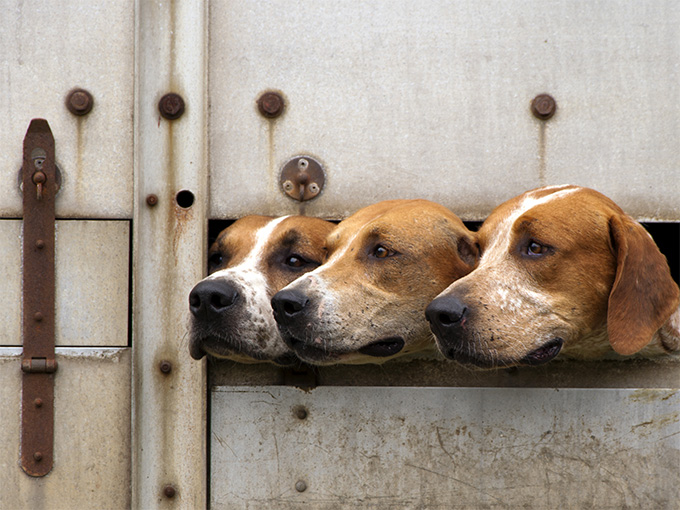
-
English Foxhound Dog Breed Picture

-
English Foxhound Dog Breed Picture
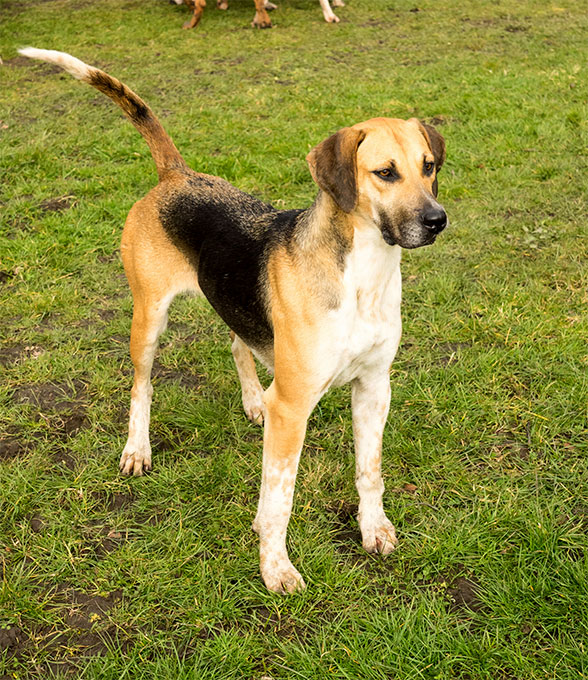
-
English Foxhound Dog Breed Picture
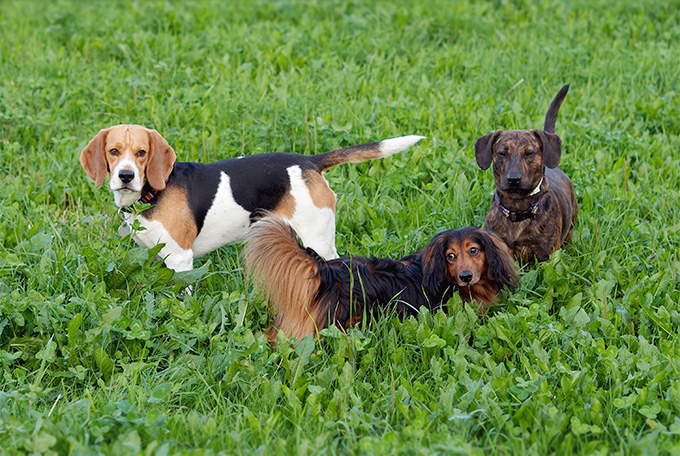
-
English Foxhound Dog Breed Picture
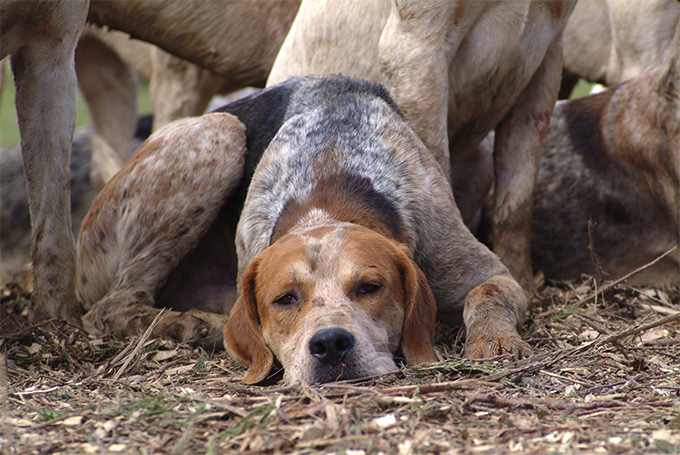
-
English Foxhound Dog Breed Picture
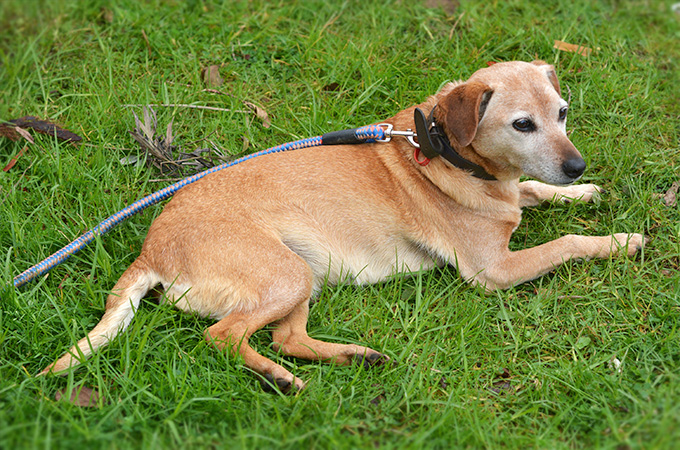
-
English Foxhound Dog Breed Picture
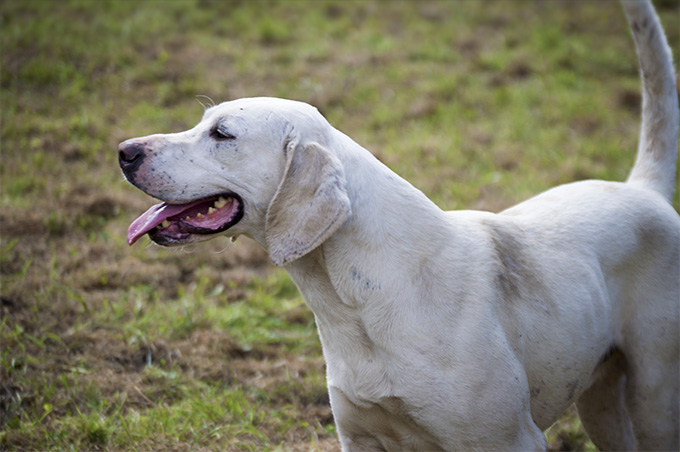
-
English Foxhound Dog Breed Picture
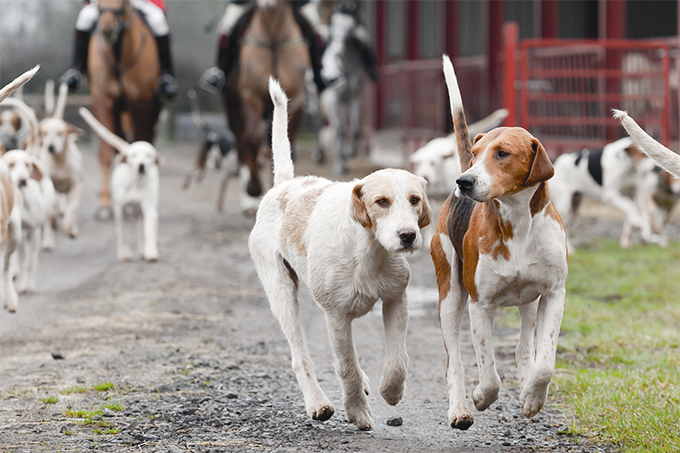
-
English Foxhound Dog Breed Picture
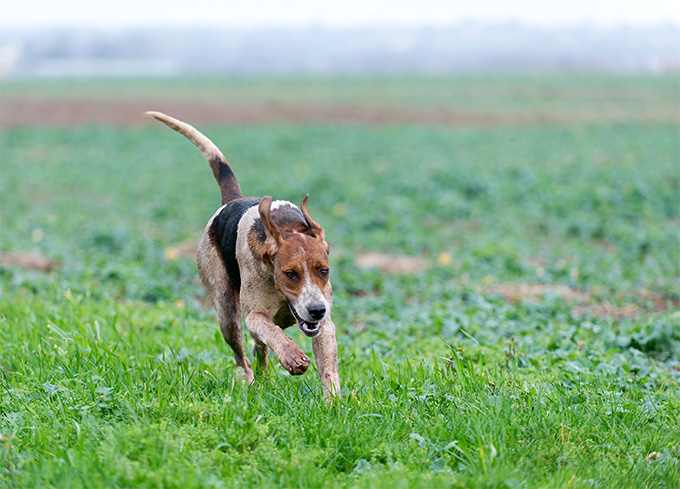
-
English Foxhound Dog Breed Picture
